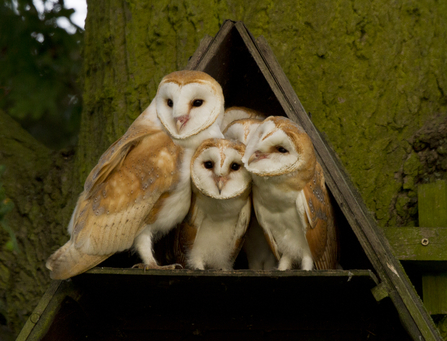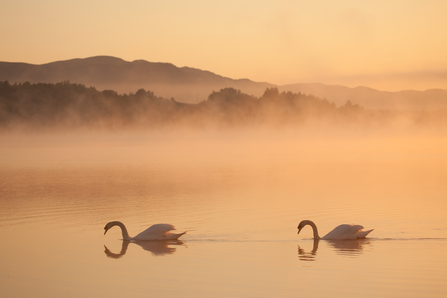Hopelessly devoted to you
(c) Mark Hamblin/2020VISION
Find out below which animals choose monogamous relationships, remaining devoted to their one mate.
(c) Nick Upton
Beavers are one of the few mammal species that mate for life, forming strong relationships with their partner that are vitally important to both reproduction and survival. Beavers are experts in teamwork, and having a dutiful and hardworking mate is crucial. The main food source for these beavers is tree bark, but they need to eat a lot of it due to its low nutritional value. Mated beaver pairs therefore team up and split their workload in order to collect enough bark to survive, alongside their other tasks such as building dams, guarding territory, and looking after young.
As work continues on our Shrewsbury beaver enclosure, we look forward to welcoming beavers in the near future, who will hopefully build a bond as steadfast as their trusty dams. For more information on our urban beaver trial, join our beaver mailing list.
Jackdaws
(c) Gillian Day
Their monotone plumage, distinctive pale eyes, and infamy in superstition may not lend jackdaws as emblems of romance. But there’s more to these small corvids than meets the eye. Intelligent and social, these birds are incredibly loyal to their mates and enjoy the company of others in the crow family. Pairs of jackdaws display gift giving behaviour and favour eye contact with each other. Historically, in some parts of the UK, spotting a jackdaw on the way to your wedding ceremony was a very good omen for the bride. Although more commonly associated with magpies, the famous “one for sorrow, two for joy” nursery rhyme can also be used to count jackdaws, and as they usually stick closely to their partner, they would therefore be common bringers of joy.
Barn Owls

(c) Russell Savory
An alabaster face of delicate feathers, framed by a heart, Barn Owls are some of the most handsome birds to swoop across our Shropshire skies. Dedicated to their mate, and deeply family-oriented, these owls are a splendid symbol for Valentine’s Day. They are contemplative and patient, characteristics they apply to their relationships, spending time nurturing their connection. Each year, as mating season approaches, barn owls repeat their courtship rituals in order to renew their bond with their mate. Hours of cheek-rubbing and mutual preening solidifies their relationship, readying it for another brood of owlets. Food is offered as gifts from the male to the female.
Swans

(c) Peter Cairns/2020VISION
With long slender necks arched and entwined together in the shape of a heart, it’s perhaps a little easier to visualise mute swans as a motif of Valentine’s Day, more so than some of the other species on this list. They are in fact a symbol of eternal love in many different cultures. Their courtship ritual is precise and graceful, a deliberate dance of synchronised bowing and head bobbing. They are devoted partners and parents, often reusing the same nest and learning from each brood in order to increase their chances of raising healthy cygnets with each mating. The relationship between a mated pair is so deep that on the death of partner, the remaining swan will go through a mourning process, often remaining near to where they spent their lives together.

